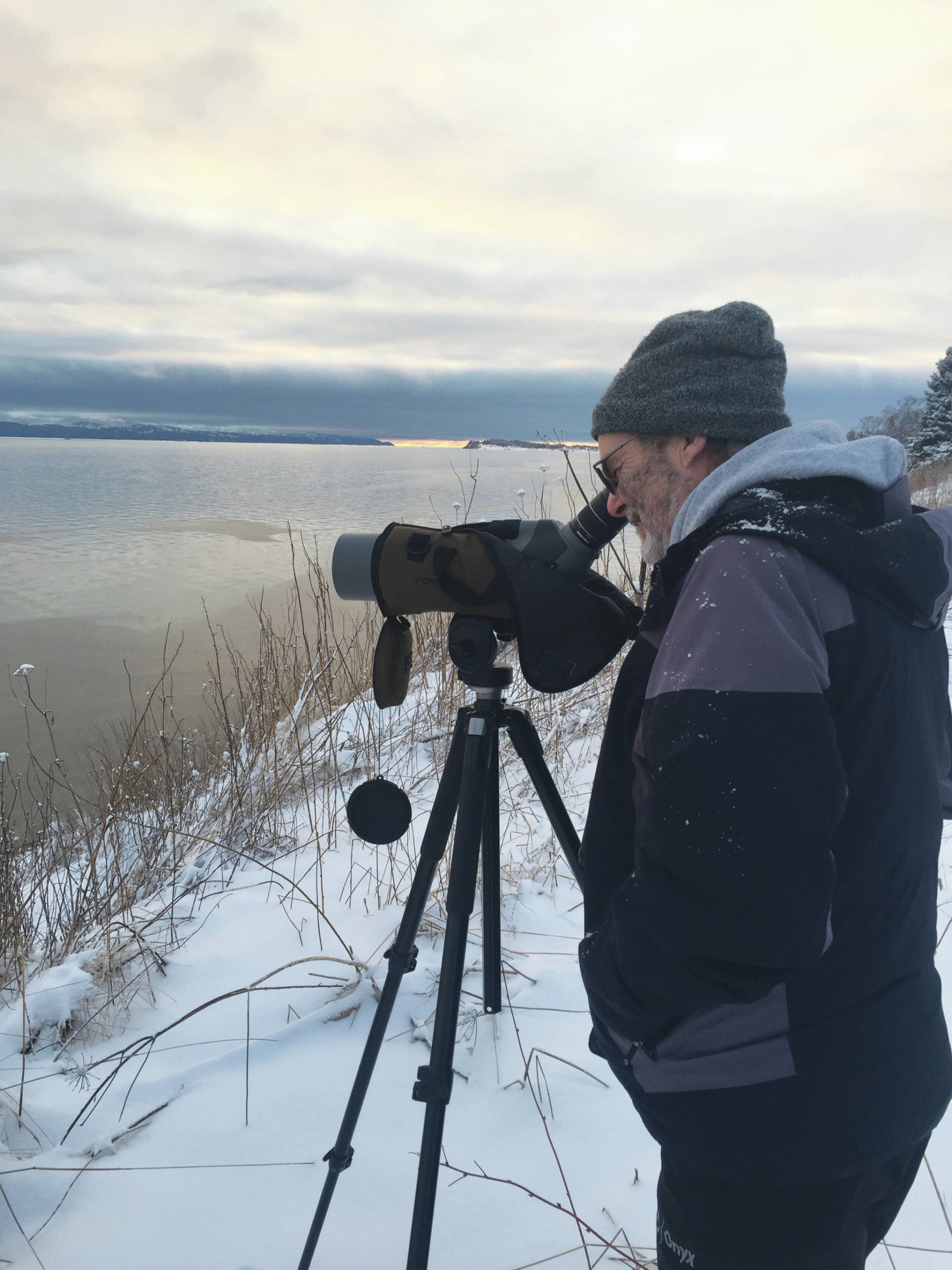By Dave Erikson
For the Homer News
The 121st Audubon Christmas Bird Count was held in Homer on Saturday, Dec. 19, the 44th year the count has been done there. This year’s count was a little different due the COVID-19 pandemic, which restricted ride sharing within the field teams, required mask-wearing and social distancing, and canceled pre- and post-count meetings.
Even with these limitations, 31 stalwart volunteers braved the weather to count birds throughout Homer’s 15-mile diameter count circle. Another 11 “feeder watchers” kept track of the birds that came into their feeders throughout the day. These dedicated birders were able to tally 13,818 individual birds of 79 different species, one fewer than the record of 80 species for last year. Eight additional species were also documented within the Homer count circle during count week (three days before and after the actual count day). Numbers of feeder watchers were up from previous years and helped achieve these high numbers.
Four species were new to the count this year: the Siberian accentor, red-throated pipit, Swainson’s thrush, and the yellow-rumped warbler. The Siberian accentor, a first for Homer, is a small perching bird similar in size to our common redpoll. This bird normally ranges from the Ural Mountains across Siberia but will occasionally wander east into western Alaska. Hopefully, this colorful little bird will stay long enough for locals to get it on their list. The red-throated pipit is another rare visitor from Siberia that often travels with our American pipit. This was also the first record of this species in Homer and was sighted during count week in Mariner Park at the base of the Homer Spit.
Swainson’s thrush is a local breeding bird in Homer, but typically migrates south to winter in Central and South America. This late occurrence of this bird is unusual. The yellow-rumped warbler is also a common breeder in the Homer area, but this late migrant was the first one seen on a Christmas Bird Count.
Anna’s hummingbirds were again documented on the count this year with three individuals. The population of Anna’s has been expanding in the western U.S. and they have become more common in Homer in the fall and early winter. Some individual birds are believed to successfully overwinter with the help of some heated hummingbird feeders.
The most abundant bird species this year were the rock sandpiper (3,120), greater scaup (2,711) and Bohemian waxwing (1,870). Rock sandpipers are typically one of the most numerous winter residents in the Homer count circle. Greater scaup are one of the common sea ducks in Kachemak, and numbers on the Christmas Bird Count are generally high when there is a lack of ice along the northern shoreline, as was the case this year. Bohemian waxwing numbers are generally high this time of year due to the abundance of berries on ornamental trees such as the European mountain ash and European bird cherry (Mayday). These amazing birds were very uncommon in the Homer area prior to introduction of these trees. Seventeen species were represented by only one individual.
Over the last several years, there have been a downward trend in numbers of four species of sea ducks in the nearshore waters of the count area. These include the common eider, Steller’s eider, white-winged scoter and surf scoter. Primary factors in this continuing negative trend are unknown.
Dave Erikson is the Homer Christmas Bird Count coordinator and compiler.

